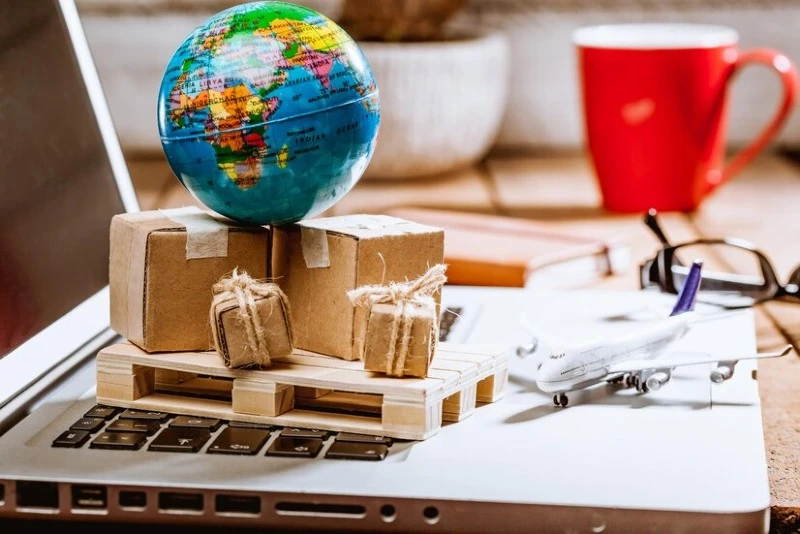How to import goods from China: A practical guide for beginners

If you are considering starting your own business or expanding your business, importing goods from China is a smart and economical choice. With its enormous manufacturing power, China is one of the world's largest markets that offers diverse products at competitive prices and quality. But to succeed in the process, it requires a thorough knowledge of the basic steps to avoid common mistakes and ensure you get the best value for your investment. In this guide, we'll take you on a comprehensive journey to understand the process of importing from China step by step.
1. Understand the market needs and identify the right product
Before you start importing goods, you need to identify the product you want to import. Make market research your starting point:
What are the needs of customers in your target market?
Is there enough demand for the product you plan to import?
What is the current competition and how can you stand out?
Make sure that the product you choose has the right quality and competitive price to meet customer expectations and generate satisfactory profits.
2. Find the perfect supplier
Choosing the right supplier is the cornerstone of the import process. You can search for suppliers through:
Trade fairs: Such as the Canton Fair in China, where you can meet suppliers face-to-face and preview products.
Online platforms: Alibaba, Made-in-China, and 1688. Make sure to deal with trusted suppliers by reading their ratings and reviews from previous customers.
Local intermediaries: If you're new to importing, a local broker with experience in dealing with Chinese suppliers can help.
Be sure to negotiate terms and prices carefully, and clarify details of quality, packaging, and delivery.
3. Check the legality of the import
Before moving forward, make sure youFamiliarize yourself with your country's customs laws and regulations. This step may include
Making sure the product is allowed to be imported.
Know the customs requirements such as taxes and duties.
Ensure that the product meets the quality and safety standards required in the target market.
Contact shipping companies or customs offices for accurate and comprehensive information.
4. Negotiate and sign contracts
Once you have chosen the right supplier, start negotiating for the best price and favorable terms. Remember that written contracts protect your rights and ensure that the agreed terms are enforced.
Tips during negotiation:
Ask for product samples to assess quality.
Agree on the method of payment (payment via an escrow account or documentary credit is often the safest).
Clearly specify shipping and delivery details in the contract.
5. Arrange the shipping process
The shipping process plays a vital role in the success of the import process. You have to determine the appropriate way to ship your goods based on the size of the order and its destination:
Sea freight: Best for large and heavy goods.
Air freight: A faster option for lightweight and high-value goods.
Express shipping: Suitable for small and urgent orders via companies like DHL and FedEx.
Make sure to cooperate with reputable shipping companies to ensure your goods arrive on time and in good condition.
6. Customs Clearance Procedures
Customs clearance is the last step to get your goods. Make sure to prepare all the required documents such as:
Commercial invoice.
Bill of lading.
Quality or conformity certificates if required.
Work with a customs broker to facilitate the process and avoid any potential delays or penalties.
7. Distribution and marketing
After the goods arrive at their destination, it's time to distribute and market them. Use an esterEffective marketing strategies across online and traditional platforms to promote your products, and focus on providing added value to attract and retain customers.
Golden tips to ensure importing success:
Start with small quantities to test the market and avoid big risks.
Build long-term relationships with reliable suppliers.
Keep track of developments in the market and competition.
Take advantage of digital tools to track shipments and analyze market performance.
Conclusion
Importing goods from China may seem complicated at first, but it becomes easier with knowledge and experience. By following the steps above, you can overcome obstacles and succeed in importing products that meet market needs and support the growth of your business. Ecosail offers you the resources and support needed to turn your idea into a reality, so start your journey now and get ready to succeed in the world of international trade.
Related Articles

Reliable shipping companies in China: Recommendations and tips from experienced traders
When you consider trading with China, shipping plays a key role in the success of your business tr...

The best packaging methods to minimize costs and ensure the safety of shipments from China
The world of shipping and global trade leaves no room for complacency when it comes to packaging s...

How to handle insurance for shipments imported from China
The world of importing from China is full of golden opportunities, but it also comes with challenges...



